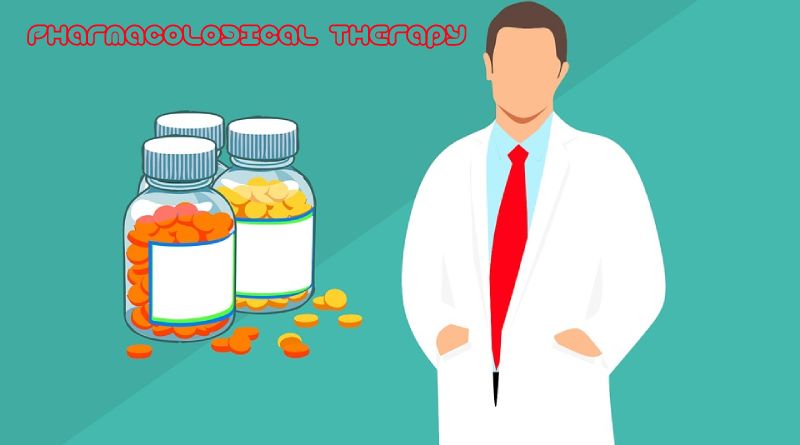The main drugs used to reduce muscle tone, are muscle relaxants. By the mechanism of action, the central muscle relaxants are distinguished by the synaptic transmission of excitation in the central nervous system and peripheral action inhibits the direct excitability of the striated muscles. When using muscle relaxants, there may be significant side effects that should be carefully evaluated when choosing a drug.
When selecting antispastic drugs, they are mainly taken into account for their ability to inhibit polysynaptic reflexes, reducing spasticity, while having the least effect on monosynaptic muscle reflexes. The antispastic agent should reduce muscle spasticity with minimal reduction in muscle strength.
Drug therapy is based on the use of tableted and injectable forms. Inward antispastic agents, reducing muscle tone, can improve motor functions, facilitate the care of an immobilized patient, relieve painful muscle spasms, enhance the action of exercise therapy, prevent the development of contractures.
Central action muscle relaxants, most commonly used for the treatment of spasmodic muscle hypertonia, include baclofen, tizanidine, tolperisone, diazepam.
Baclofen (Baclosan, Liorasal) has an antispastic effect mainly at the spinal level. The preparation is an analogue of gamma-aminobutyric acid (GMA), which binds to presynaptic GABA receptors, resulting in a decrease in excretion of the amino acid glutamate, aspartate and suppression of mono- and polysynaptic activity at the spinal level, which causes a decrease in spasticity. The drug also has a moderate central analgesic effect. Baclofen is used for spinal and cerebral spastic muscle hypertension of various genesis. The initial dose is 5-15 mg / sutv one or three doses, then increase the dose by 5 mg every day until the desired effect is obtained. The drug is taken with food. The maximum dose of baclofen for adults is 60-75 mg / day. Side effects are often manifested by sedation, drowsiness, decreased concentration, dizziness, and often weaken in the process of treatment. Perhaps the emergence of nausea, constipation and diarrhea, arterial hypertension, increased ataxia, the emergence of paresthesias. Care is needed in the treatment of elderly patients, patients with stroke, patients with peptic ulcer of the stomach and duodenum. Baclofen is contraindicated in case of epilepsy, the presence of seizures in the anamnesis.
In severe spasticity, when the usual oral administration of antispastic drugs is not effective, intrathecal administration of baclofen, first proposed in 1984 by R. Penn, is indicated. To achieve the required concentration of the drug in the cerebrospinal fluid, it is necessary to take quite large doses of baclofen, which can lead to disturbances in consciousness, drowsiness, weakness. In connection with this, systems have been developed with which baclofen is delivered directly to the subshell space of the spinal cord with the help of an intrathecal baclofen pumping system. In this case, the clinical effect is achieved much lower doses of baclofen than with the use of tablets.
This system consists of a reservoir containing baclofen or a similar preparation, pump pumps, through which the drug is dosed into the subshell space of the spinal cord through a lumbar catheter and power unit. From the reservoir, baclofen enters directly into the cerebrospinal fluid, and its dosage is controlled by a special radio telemetric device. The amount of medicinal product entering the cerebrospinal fluid can be changed depending on the clinical picture. Addition of baclofen in the reservoir is performed after 2-3 months with the help of a percutaneous puncture.
The use of baclofen pump improves the speed and quality of walking of patients with non-fixed reflex contractures due to high spasticity of synergist muscles and imbalance of antagonist muscles. The 15-year clinical experience of using baclofen intrathecally in patients with stroke testifies to the high effectiveness of this method in reducing not only the degree of spasticity, but also pain syndromes and dystonic disorders. A positive effect of the baclofen pump on the quality of life of patients with stroke was noted.
Tizanidine (Sirdalud) is a central muscle relaxant, an alpha 2-adrenergic receptor agonist. The drug reduces spasticity due to suppression of polysynaptic reflexes at the level of the spinal cord, which can be caused by inhibition of the release of excitatory amino acids L-glutamate and L-aspartate and activation of glycine, which reduces the excitability of interneurons of the spinal cord. Tizanidine also has a moderate central analgesic effect. The drug is effective in cerebral and spinal spasticity, as well as in painful muscle spasms. The initial dose of the drug is 2-6 mg / day in one or three doses, with individual selection, the increase in dose occurs on day 3-4 on 2 mg. When administered orally, the drug appears after 30-45 minutes, the maximum effect occurs within 1-2 hours. The average therapeutic dose is 12-24 mg / day, the maximum dose is 36 mg / day. As side effects may occur drowsiness, dry mouth, dizziness and lower blood pressure, which limits the use of the drug in post-spastic spasticity. The antispastic effect of tizanidine is comparable to the effect of baclofen, but tizanidine with adequate dosage is best tolerated, since it does not cause general muscle weakness and does not increase muscle weakness in the paralyzed limb.
Tolperisone (Midocalm) is an antispastic agent of central action, inhibits the caudal part of the reticular formation and possesses H-cholinolytic properties. Tolperisone reduces the activity of spinal neurons involved in the formation of spasticity by limiting the flow of sodium through the membrane of nerve cells. The most commonly used is 300-450 mg / day in two or three doses. Reduction of muscle tone with the appointment of tolperisone is sometimes accompanied by a vasodilating effect, which should be taken into account when appointing patients with a tendency to arterial hypotension. Also, the drug may cause or exacerbate urinary incontinence in patients.
The main side effect of baclofen, tizanidine and tolperisone is the rapid onset of muscle weakness, and in each case the doctor must find a balance between a decrease in tone and an increase in weakness. The balance curve between a decrease in spastic tone and an increase in muscle weakness in patients on the background of an increase in the dose of Miodocalm, Sirdaluda or Baclofen shows that the fastest increase in weakness occurs with the administration of baclofen, and the softest drug that allows one to select an individual dosage efficiently is Midokalm. In all cases, considering the presence of a narrow therapeutic window, the course of treatment starts with a small dose of the drug, gradually increasing it to achieve a clear antispastic effect, but not until the appearance of weakness.
Diazepam (Realanium, Relium, Sibazon) is a muscle relaxant since it can stimulate reduced presynaptic inhibition at the spinal level. It has no direct GABA-ergic properties, increases the concentration of acetylcholine in the brain and inhibits the reuptake of norepinephrine and dopamine in the synapses. This leads to an increase in presynaptic inhibition and is manifested by a decrease in resistance to stretching, an increase in the range of movements. Diazepam also has the ability to reduce pain caused by muscle spasm. Along with a decrease in muscle tone, the development of inhibition, dizziness, impaired attention and coordination due to toxic effects on the central nervous system. This significantly limits the use of diazepam as a muscle relaxant. It is used mainly to treat spasticity of spinal origin if it is necessary to short-term decrease in muscle tone. To treat spasticity appoint a dose of 5 mg once or 2 mg 2 times a day. The maximum daily dose may be 60 mg. At high doses, there may be a disorder of consciousness, transient dysfunction of the liver and changes in blood. The duration of treatment is limited because of the possible development of drug dependence.
Clonazepam is a benzodiazepine derivative. Clonazepam has a calming, central, miorelaxing, anxiolytic effect. The miorelaxing effect is achieved by enhancing the inhibitory effect of GABA on the transmission of nerve impulses, stimulation of benzodiazepine receptors located in the allosteric center of postsynaptic GABA receptors of the ascending activating reticular formation of the brain stem and intercalary neurons of the lateral horns of the spinal cord, as well as reducing the excitability of the subcortical structures of the brain and inhibition of polysynaptic spinal reflexes.
The rapid onset of drowsiness, dizziness and addiction limits the use of this drug. To reduce the occurrence of possible adverse reactions, it is necessary to achieve a therapeutic dose by slow titration for two weeks. For oral administration, an initial dose of no more than 1 mg / day is recommended. The maintenance dose is 4-8 mg / day. It is possible to administer small doses in combination with other muscle relaxants. Clonazepam is effective in paroxysmal enhancements of muscle tone. Contraindicated in acute liver, kidney, myasthenia gravis.
Dicatia clorazepat (Transxen) is an analogue of benzodiazepine, it is transformed into the main metabolite of diazepam, has a greater activity and duration of antispastic action than diazepam. Its good effect is noted in the treatment in the form of a decrease in phasic reflexes to tension, has a slight sedative effect. The initial dose is 5 mg 4 times a day, then decreases to 5 mg twice a day.
Dantrolene, an imidazoline derivative, acts outside the central nervous system, mainly at the level of the muscle fibers. The mechanism of dantrolene action is the blocking of calcium release from the sarcoplasmic reticulum, which leads to a decrease in the contractility of skeletal muscles, a reduction in muscle tone and phasic reflexes, and an increase in the range of passive movements. An important advantage of dantrolene in relation to other muscle relaxants is its proven effectiveness with regard to spasticity not only of spinal, but also of cerebral genesis. The initial dose is 25 mg / day, with tolerability increasing the dose for 4 weeks to 400 mg / day. Side effects – drowsiness, dizziness, nausea, diarrhea, decreased glomerular filtration rate. Serious danger, especially in elderly patients at a dose of more than 200 mg / day, is a hepatotoxic effect, therefore, during the treatment period, it is necessary to regularly monitor liver function. Elimination of dantrolene by 50% is due to hepatic metabolism, in connection with this it is contraindicated in liver diseases. Caution should be observed in cases of severe cardiac or pulmonary diseases.
Catapresane – is used mainly for spinal injuries, acts on alpha-2-agonists of the brain, has presynaptic inhibition. Of the side effects observed decrease in blood pressure and depression. The initial dose is 0.05 mg 2 times a day, the maximum dose is 0.1 mg 4 times a day.
Temazepam – interacts with benzodiazepine receptors of the allosteric center of postsynaptic GABA receptors located in the limbic system, ascending activating reticular formation, hippocampus, intercalary neurons of the lateral horns of the spinal cord. As a result, channels for incoming currents of chloride ions are opened and thus the action of the endogenous inhibitory mediator GABA is potentiated. The recommended dose is 10 mg 3 times a day. Its combination with baclofen is effective.
















Add Comment